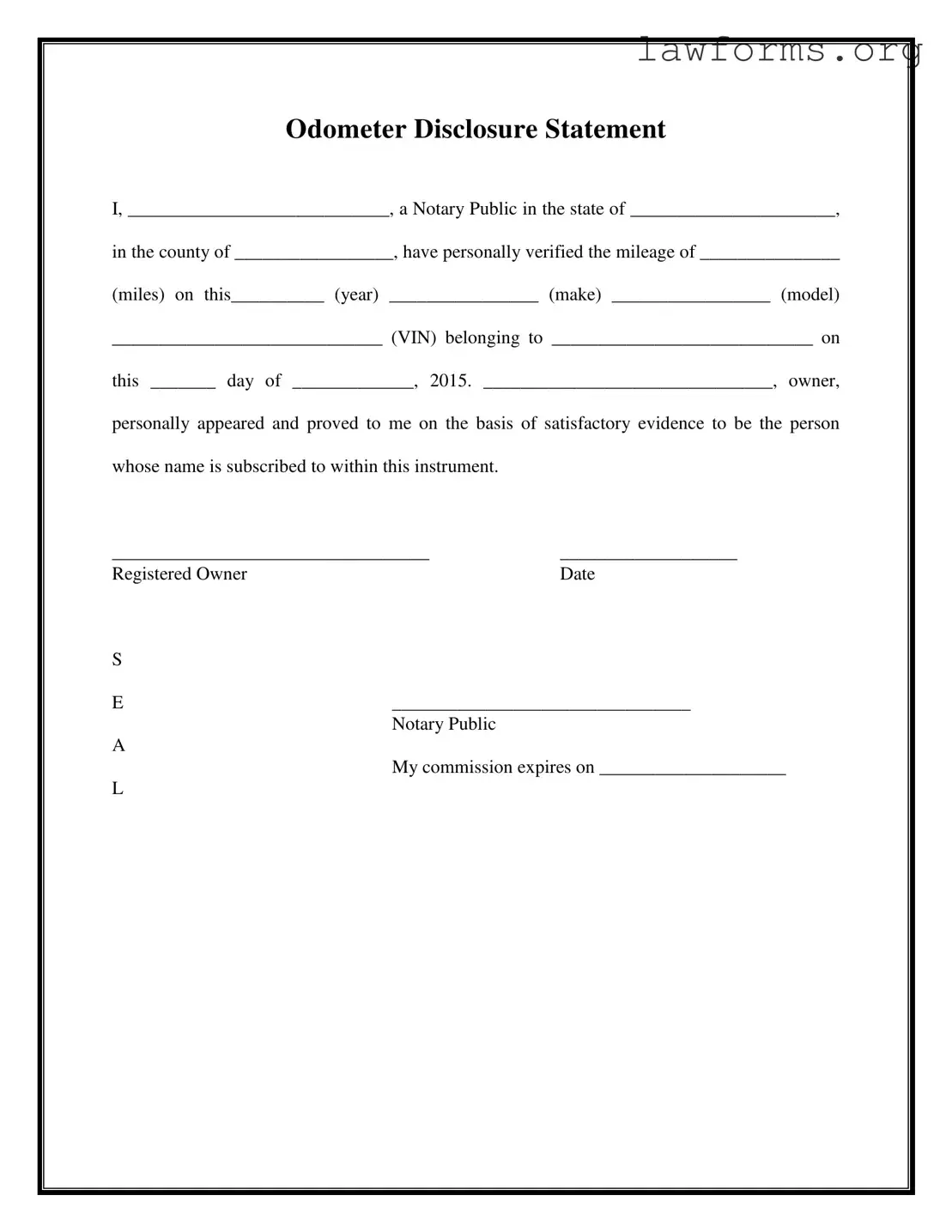Fill Out a Valid Notarized Odometer Statement Template
The Notarized Odometer Statement form serves as a formal declaration of a vehicle's mileage at the time of sale. This document, verified by a Notary Public, ensures that the information provided is accurate and legally binding. To complete your transaction smoothly, fill out the Notarized Odometer Statement form by clicking the button below.
Customize Document Online

